Camp Wiñaywayna is the largest on the trail. Hikers like ourselves, tired from three days of climbing up and down the mountains, and hikers from the less stressful 2-day trek all sleep in this one location for a single reason… to be close to the entrance of Machu Picchu. In the wee hours of the morning, there is a race to see who can be at the checkpoint first. For ourselves, that meant waking up well before dawn. Three thirty in the morning to be exact. Yes, you read that right 3 o’thirty in the morning! In order to enter the last section of the trail, it is necessary to pass a checkpoint that doesn’t open until 5:30 am but if you wait until that late in the morning, you will find yourself standing in line behind scores of fellow hikers.
The Inca Trail – Day 4 – Arriving in Machu Picchu
The night before, our porters gave us our boxed breakfasts and we already had them packed with most of our gear. At 3am, I could hear noises in the kitchen next to our camp… porters were heating water for coca tea. “Why wait until 3:30,” I thought. I went ahead and started stuffing my sleeping bag and rolling my sleeping pad. No sense in laying awake in the dark, I thought. I wouldn’t rest anyway.
By the time the porter came around with our morning coca tea, my husband and I were packed and ready to leave the tent. Our boys weren’t far behind.
It was dripping again… not really raining but not not raining, if you know what I mean. It was also very dark. The main building had a few lights and most of the hikers used headlamps to get around. The porters from all the camps were up and at ’em. Some were preparing breakfast for those that were planning on a later start and others were breaking camp like our own. They would not be hiking with us today but would take a quicker trail back to the train at KM 104. We, on the other hand, would take the trail to the check point, pass it at 5:30 am, hike to Inti Punku, the Sun Gate, and then be in Machu Picchu itself by about 8am.
Our first leg of the morning was extremely short. It took less than 15 minutes to reach the check point. The building was dark and only one other group had arrived before us. The walkway up to the checkpoint was covered by an awning and there was a row of benches along one side. We sat down on the benches and in a few minutes, were thanking the national park for building the awning as it had begun to rain in earnest. Some of us tackled our box of breakfast and others tried catching a little rest. It was only about 4am and we were all pretty tired.
The line slowly grew until about 5am when it suddenly seemed to multiply beyond belief. It was raining harder outside and folks from the back of the line were pushing up so that they could get under the awning. Our neat, orderly line was turning into a jumple of sleepy but excited people. We could feel the anxiety growing. Were people cutting line? Were they trying to get ahead of others who were sitting on the benches? Guides were keeping an eye on everyone and Fredy told us to be ready so we tossed on our backpacks, stood up and waited for the last half hour. I listened to a group in front of us – a college aged American was teaching a slightly older European how to speak Spanish – it was really very funny at moments and it helped pass the time. Waiting in line has never been my strong suit.
Suddenly, the crowd parted to let a man through… it was the park employee getting ready to open the gate! Gentleman, start your engines! The energy of the crowd started to grow and I really did begin to wonder if we were in a race. Heaven forbid… I had just found my hiking comfort level the day before and here I was standing at the front of a rabid crowd of hikers, all faster and better equipped than myself, ready to run me off the trail in our quest to get to Machu Picchu with the sun. Of course, with the clouds and the rain, that quest was a pretty lame one – the pictures would probably be better when the sun was a little higher in the sky and had a chance to break through the cloud layer! But tell that to all the people behind me.
Fredy is a smart man and knows the park staff. He had all our paperwork in hand and just told the rest of us to start hiking. He would catch up with us after the paperwork was checked. We were off, the first of a dozen people to enter this portion of the trail. I started hiking at a quick pace, probably quicker than I should have, partly from the adrenaline, partly from wanting to put as much distance between myself and those hikers behind me, and party because I wanted to see Machu Picchu.
It was raining pretty consistently and the sun was just coming up. The sky was that pre-dawn gray that tells you the sun is arriving but that it won’t be showing up through the clouds for a very long time.
This part of the trail really deserves more time than we gave it. I would love to come back and hike it with the leisure it truly deserves. The trail is lined by jungle and the place is alive with birds. They sang me down the trail – I could hear so many different varieties cheering me on from the sidelines. Every once in a while, I would catch a glimpse of wings or a rustle of feathers but only rarely. These birds were well camoflauged in their habitat and only a patient birdwatcher with a pair of good binoculars and a stroke of luck will be rewarded with a sighting. The trees and bushes were dripping; even when the rain paused we were still getting wet as the accumulated water kept falling in huge drops. Rain forest indeed.
But with water comes flowers… beautiful flowers that we caught pictures of as we went running down the trail. Quick was better anyway – the rain was not good for the camera and I was keeping it protected inside my poncho while trying to keep it from fogging up from my body heat. I was surprised to see rhododendrons – beautiful bushes full of splashes of bubblegum pink. The bushes were newly blooming and many blossoms were still in bud form, giving the flowers the look of fireworks in the sky. We also saw more varieties of orchids, most related to the Wiñay Wayna orchid we had seen the day before.
Fredy had promised a fairly level trail. Every time we hit a new hill, I swore at him. I am not sure what his definition of level is, but this trail had moments of hellish climbing. I could tell I was hiking better because my heart rate was creeping up there like it does at the gym on the treadmill… but I was also breathing fully into my lungs and enjoying the increased oxygen I could get to my muscles. I did have to take moments to rest but they were much fewer than the previous days’ hiking. And, on this day, I didn’t have to stop for porters to pass. I was polite a few times and allowed hikers to pass with ease by standing to the side but I quickly realized that if I kept doing that, I would never get to Machu Picchu. Once people started catching up with me, there were dozens hiking together in a single line. If I pulled over, I could stand for five or ten minutes waiting for everyone to pass, many of them not hiking any faster than myself. If people wanted to pass me, they would have to do it while I kept hiking on the trail. It was wide enough in most locations so I didn’t feel too bad.
When we arrived at a set of stone steps that looked more like a ladder than a stairway, I was really swearing. Each step was narrow and very, very steep so I took them like a four-limbed quadraped, using my hands and arms like legs to help me up the trail. I wasn’t the only one. I am not sure if it was the rise of the steps which made it most difficult or the narrowness of the tread which made it almost impossible to balance on one foot at a time. Almost at the top, I heard someone call out “Hey, Mom!” Luckily, I saw the humor in the situation and smiled as they snapped my picture. This as my feet are stepping on my poncho and I’m practically tripping over my own gear to make it up the “easy” part of the Inca Trail.
A hop, skip, and a jump (and a few more steps up and down the level trail), and we arrived at Inti Punku, the famous Sun Gate. This is the traditional entrance to Machu Picchu, the one used by generations of Inca on their pilgrimage to this famous site. Like other Incan sites of importance, this one is built without mortar, the stones carefully shaped and laid together so well that they have stood the test of time, of earthquakes, of freezing cold, pouring rain, and scorching sun. On the day of the summer solstice, on a day without clouds, the sun shines through this gate and its rays travel down into the city and enter a window in the Temple of the Sun.
From the gate, hikers catch their first view of Machu Picchu… if the weather is cooperative. This day, we were lucky. The clouds were once again playing hide and seek but when we arrived, we had a spectacular view of the city. A few minutes later it was hidden. Then it appeared again. The clouds played this game many times during our short stop here.
Will it surprise you to learn that I cried? If you know me at all, and if you’ve been following me along through this series, you won’t be surprised at all. The emotional release that comes from reaching a difficult goal often brings me to tears and this was a difficult goal. The four days of hiking, the early morning, the once-in-a-lifetime nature of the entire trip, all came together at this single moment in time. My youngest son’s face was a joy to see… he was radiant and so happy to be here, dripping wet and all. As the Argentines would say, Vale la pena el viaje! Literally – This trip was worth the pain.
Machu Picchu wasn’t the only view from Inti Punku. We could see the river valley far below, the water a milky red coffee color bordered by the lush green of surrounding jungle. We could see the mountain behind Machu Picchu, Wayna Picchu, or Young Peak. More from Wikipedia:
According to local guides, the top of Wayna Picchu was the residence for the high priest and the local virgins. Every morning before sunrise, the high priest with a small group would walk to Machu Picchu to signal the coming of the new day.
We could see Wayna Picchu standing proud and strong. Close-ups of the mountain reveal a trail much like the one we had been traversing the last few days, stone step after stone step. It is possible to use the trail to hike to the top but the rules recently changed and it is necessary to buy a permit in advance to access that trail. We were fine skipping the extra steps, to tell you the truth. Our goal had always been to walk among the ruins and that would be enough for us.
We could also see more of the Andean mountain range that surrounds Machu Picchu. Peaks covered in snow in summer are a reminder of the harsh weather conditions in the Andes year round. But snow covered peaks are a joy to see, even when they are nearly camouflaged by clouds of a similar color.
What we didn’t get to see very well was the Sun Gate itself – the stone walls were draped with hikers admiring the distant view of Machu Picchu, more showing up as each minute passed, making it next to impossible to actually see the site itself.
Just as we were getting ready to leave Inti Punku, new hikers were arriving and the clouds had obscured everything. I could hear disappointment in their voices so I turned to tell them to wait a few moments; I had faith that the clouds would once again dance away and that these hikers would be blessed with a gorgeous glimpse as well.
Honestly, if the view would have been easy, I might have been disappointed. The clouds forced us to appreciate every moment that we could see Machu Picchu. And see it we did, again and again, along the entire trail. This portion is cut directly into the mountainside and we were approaching Machu Picchu from above and with every twist and turn we could see a little more and from a slightly different perspective. Amazingly, there were moments when the clouds just disappeared, like they had never been there at all. The photos we took are not the traditional view everyone sees but I like them all the more for that reason. Anyway, we would have a shot of that traditional view later in the day.
We pushed on. One of the reasons we were pushing so hard at this point had to do with crowds. A couple of hours earlier, Fredy had realized that the morning hours in Machu Picchu would be less crowded than usual. We wondered how on earth he could tell such a thing. His cellphone had not been working; he hadn’t spoken to any guides who had been outside of camp. How on earth did he come to this conclusion? Well, at 5:30am he should have heard something that he didn’t. While we were waiting for the gate to open, our porters had hiked down to the river valley to catch the early morning train out. Fredy never heard the whistle – which means the train never arrived. Thus, he decided, there are had been a landslide on the tracks and tourists from outside the area of Agua Calientes wouldn’t make a morning entrance time for the park. His theory was confirmed at Inti Punku where he met guides coming up from Machu Picchu. A landslide was in the process of being cleared and, for the moment, the only tourists in Machu Picchu were those that had spent the night in Agua Calientes or in camp with us.
From the trail, we could see the long, winding switchbacks that the buses from Agua Calientes would have to take to reach Machu Picchu. They make an incredible stark line, both from satellite view and from the trail. There are some that would like to make that road obsolete and build an aerial tramway – but competing interests from all sides make any changes to the current system unlikely. Environmentalists and some locals don’t want increased tourism because they are already afraid that the site is seeing too many people and will be further damaged by increased tourism. The bus company operators are obviously lobbying against the tram as well. Other environmentalists see a tram as an opportunity to get people off the walk ways – to allow people to look down upon the site rather than walking through it. 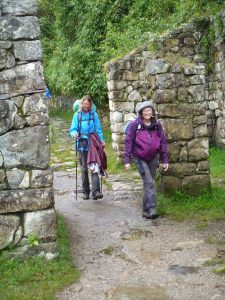 The footsteps of thousands upon thousands of visitors a year is beginning to take its toll and Machu Picchu is slowly sinking a few centimeters every year. Some of the ancient walls are beginning to crumble from a combination of an ancient drainage system that is beginning to fail and the compression of soil caused by all of the visitors. Ten years ago, the Los Angeles Times asked these questions,
The footsteps of thousands upon thousands of visitors a year is beginning to take its toll and Machu Picchu is slowly sinking a few centimeters every year. Some of the ancient walls are beginning to crumble from a combination of an ancient drainage system that is beginning to fail and the compression of soil caused by all of the visitors. Ten years ago, the Los Angeles Times asked these questions,
“How do you balance a poor country’s hunger for tourist dollars with worries about history and heritage? And how much access do you allow to an attraction whose mystique is based largely on its remoteness?”
Since that time, the Peruvian government has taken steps to limit tourists – hikers are limited to 500 a day on the trail and visitors to Machu Picchu to 2200 per day (a more recent article says the limit is now 2500 per day but is rarely followed). People are being turned away because they don’t understand the need to reserve a ticket ahead of time. Imagine planning your once in a lifetime trip and believing all you have to do is buy a ticket on the day you want to see the ruins… a very American way to travel, right? Well, if you do that here, you won’t get in. Tickets are sold out months in advance in the high season and the low season is quickly catching up.
The arguments are still taking place with the government wanting to increase tourism possibly by limiting the amount of time each person has upon entering the site and with UNESCO wanting to preserve what is left and limit tourism even more.
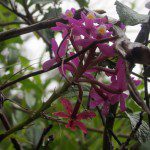 |
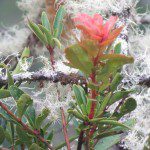 |
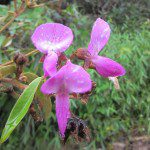 |
As we hiked along, we passed other Incan ruins, sometimes just a wall or a terrace. The most striking, however, was a large stone, almost directly in the center of our path. The story that you hear about this stone will depend on the guide who is with you. I heard them called altars, sacrificial stones, and shrines. Our guide, Fredy, never spoke of human sacrifice though modern archaeological studies show evidence that some did take place within the civilization. With little historical data, it is difficult to know the true purpose of this stone or of many others like it. Fredy told us that in ancient times, pilgrims would arrive to Machu Picchu with a stone from their home territory, most often carried as a penance, and then leave it at this shrine. It served as a way cleanse oneself before entering the sacred space of Machu Picchu. Today, some guides still encourage people to leave stones or coca leaves at this site, a habit that irks Fredy to no end.
Another site that caught us by surprise looked like a small vineyard tucked into the ancient terraces. We had no idea that anyone was growing grapes in the area. But when we did a little research later on, we found out that sign isn’t the name of a soon to be famous vintner in Peru, but of a tree nursery. It looks as if the National Park Service reserves some space in the terraces to grow native plants and to transplant them to locations needing protection from erosion.
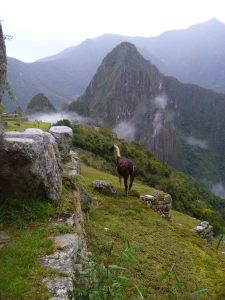
The sight of the terraces told us that we were almost there. I could feel Machu Picchu just around the corner. And who was waiting to welcome us but a bedraggled looking llama, wet from the constant mist and working hard to keep the lush grass under control!
Of course, the clouds were still playing games with us. Just as we approached, Fredy took out his trusty umbrella once again and the rain began to fall. The clouds sucked in over the top of us just after our first close view of the ruins. We still weren’t in Machu Picchu proper, but we didn’t know that yet. In front of us were a few reconstructed buildings, complete with walls and thatched roofs. We had reached the famous Guard Tower from where almost every picture you have seen of Machu Picchu is taken. For us, it was not the time for this photo. Instead, we were directed by Fredy down, down, down a modern sidewalk to the entrance of the park. That’s right, in order to see Machu Picchu, hikers of the Inca Trail need to leave the park and then re-enter for the day. We would have the opportunity to store our packs, to use the bathrooms, to grab a hot chocolate and to hope that the rain would just go away.
Our actual tour of Machu Picchu is a diary in itself. It seems almost unfair to have brought you this far on our day and to stop here but without a break, the narration and pictures of the late morning would be overkill. Better to take a deep breath, rest up, and join me again in the next diary. I hope to see you soon!
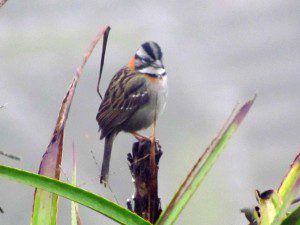
We started our day at Camp Wiñaywayna with an elevation of 8,829 feet. Machu Pichu is at 7,872 feet and Agua Calientes is even lower, at 6,540. We hiked our shortest day, 7 km or 4 miles, not including the touring at Machu Picchu.
In total, from day one, we were lower than our starting elevation by about 2000 feet – the air smelled delicious and full of oxygen! We had hiked a total of 25 miles in 4 days.
Three years ago, my family was living in Buenos Aires, Argentina. We took the time to travel and managed to see a good part of Argentina, Uruguay, Peru, and Bolivia. This is one post of many from that time period that originally appeared at Daily Kos. FYI – a diary is the same as a blog post in that forum.


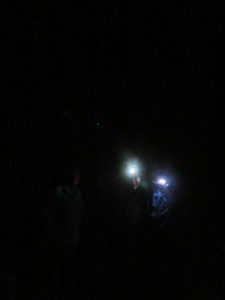
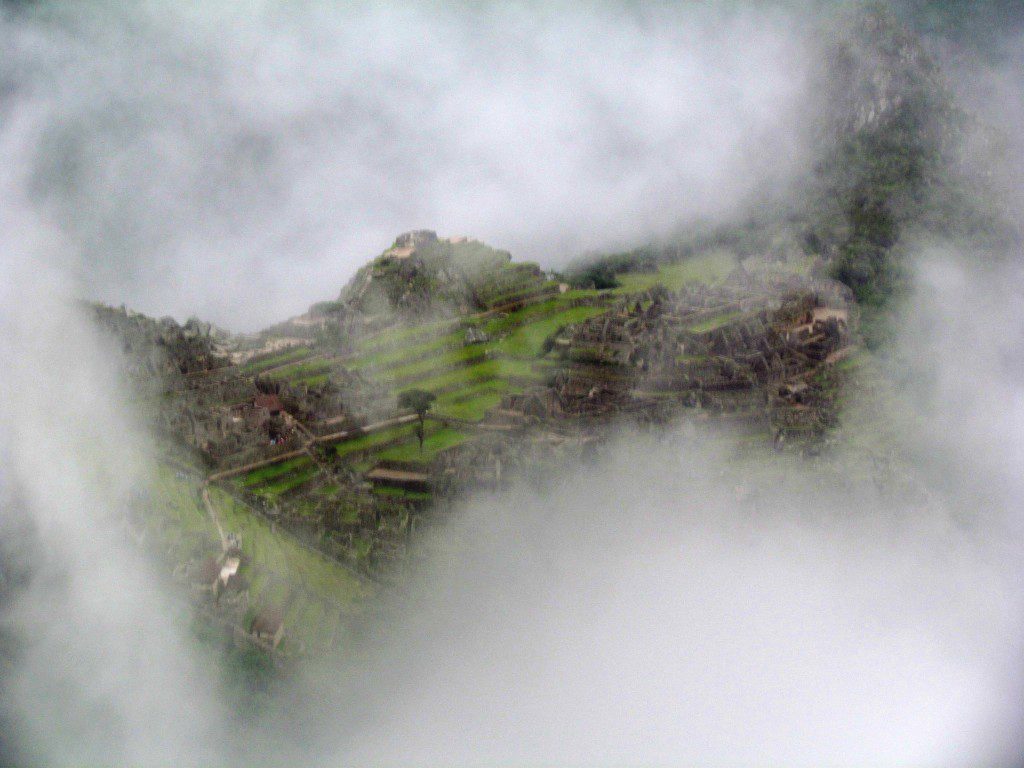
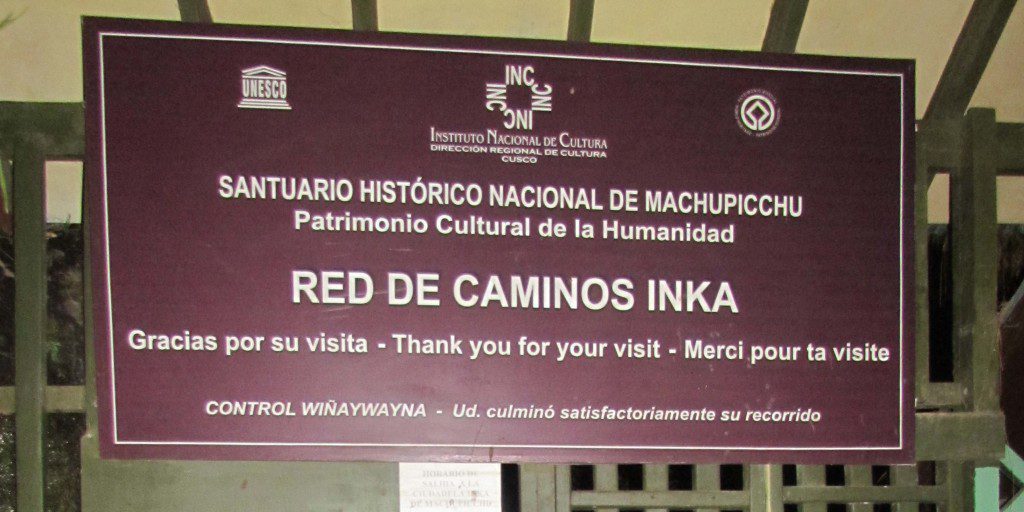
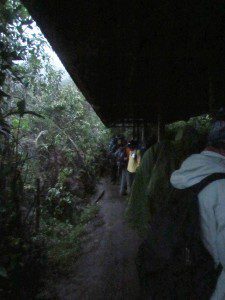
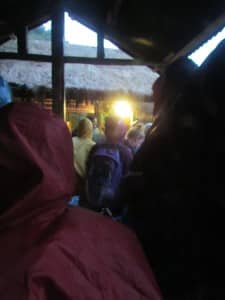
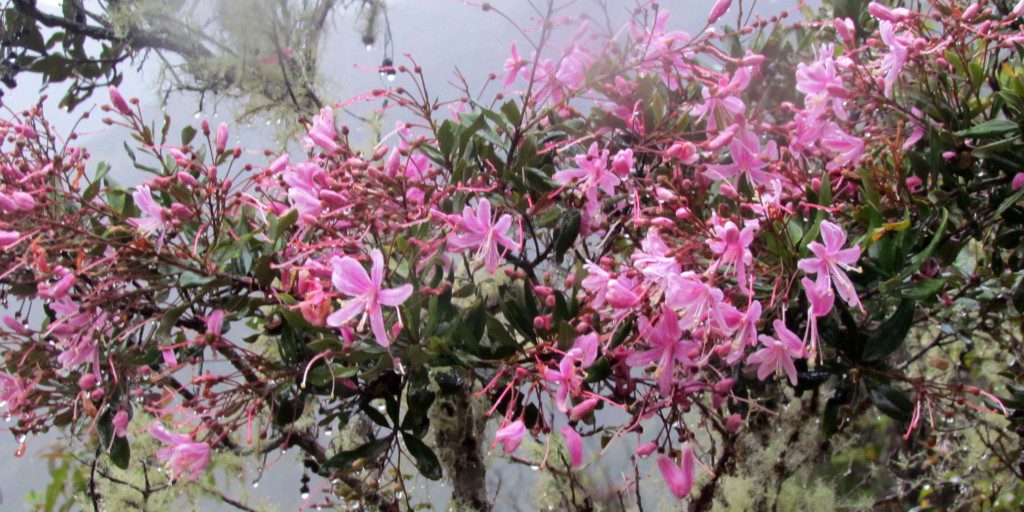
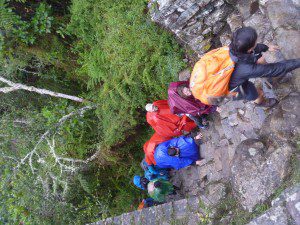
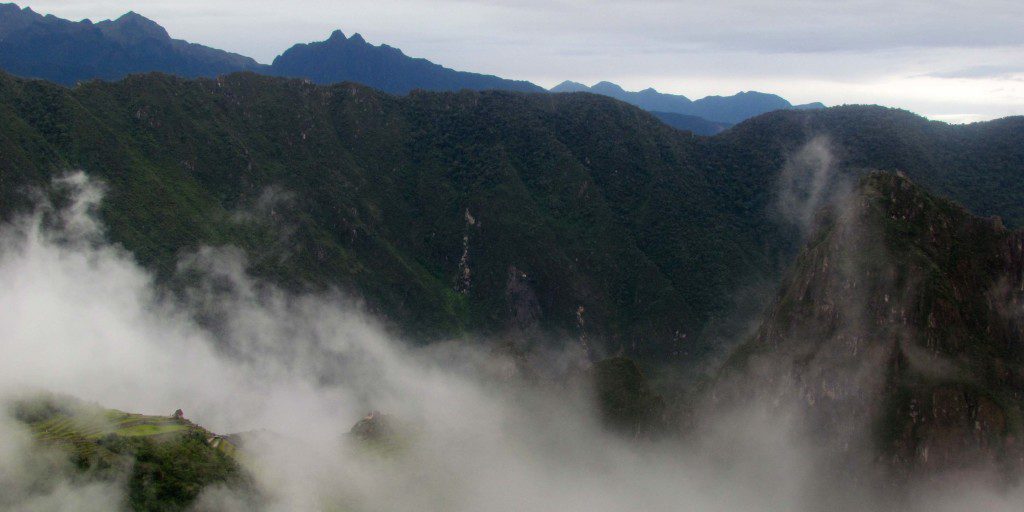
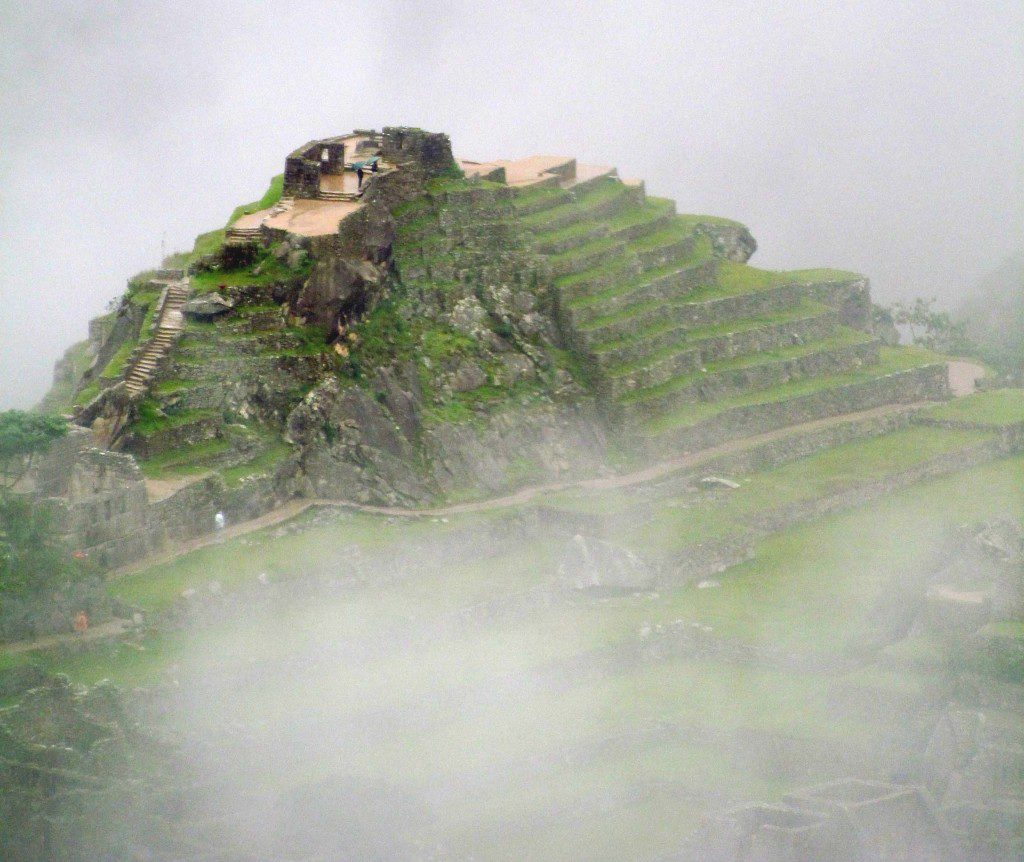
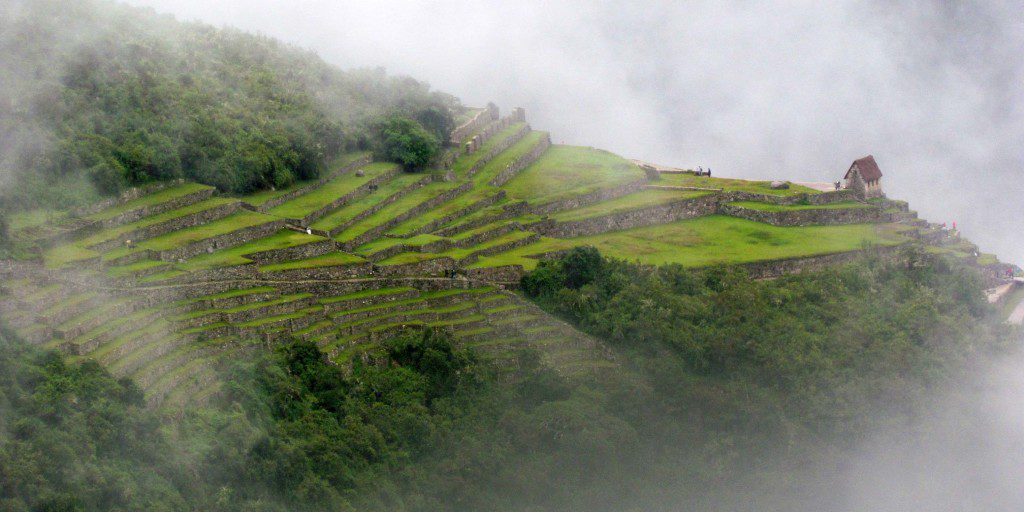
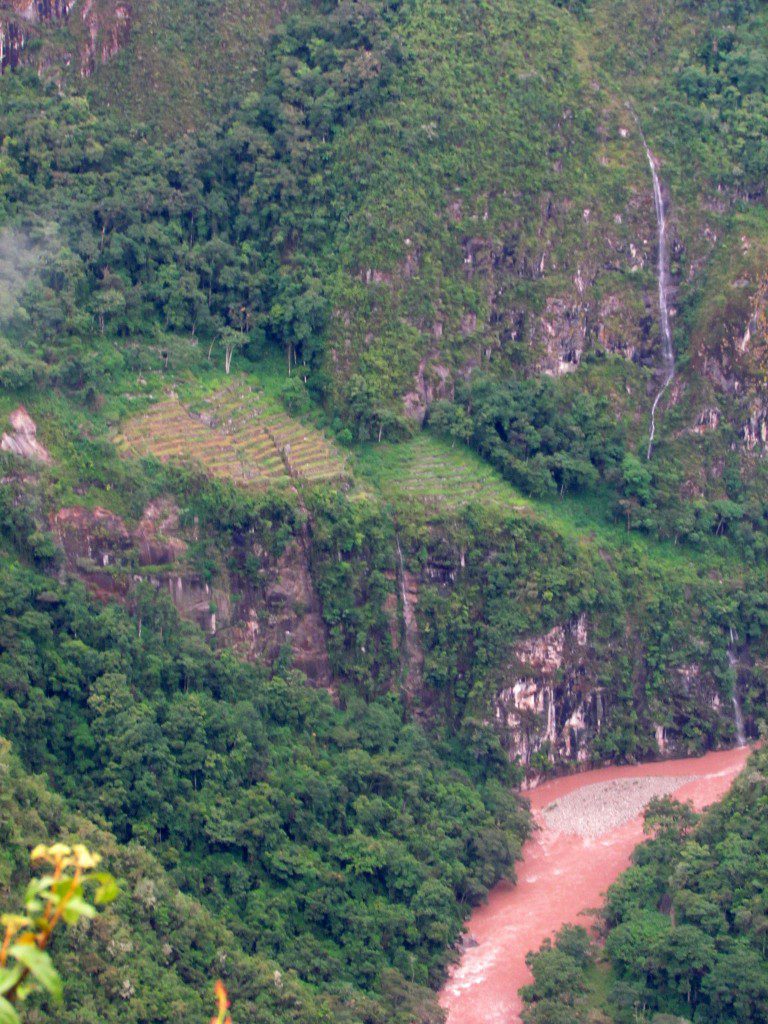
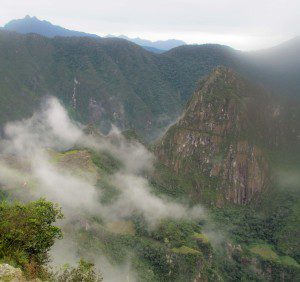
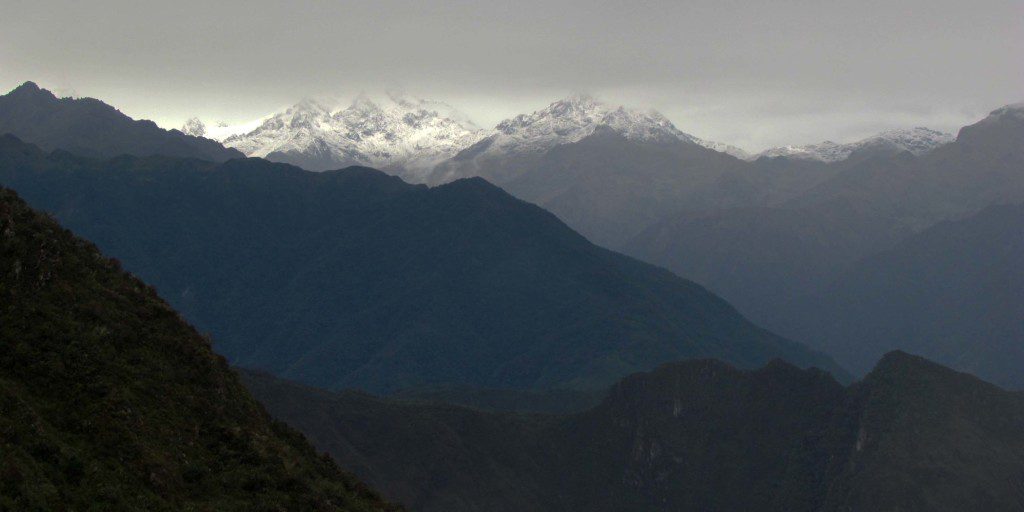
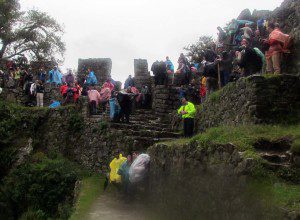
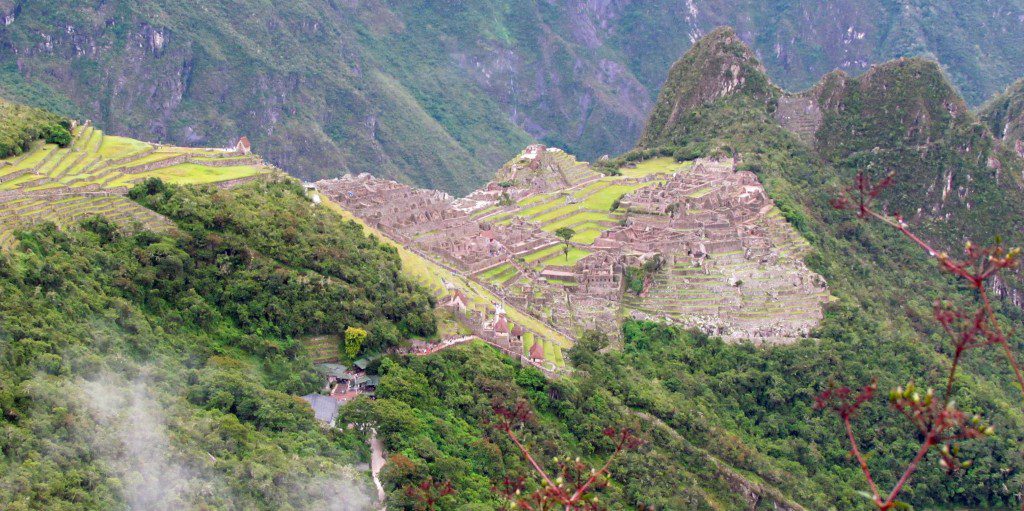
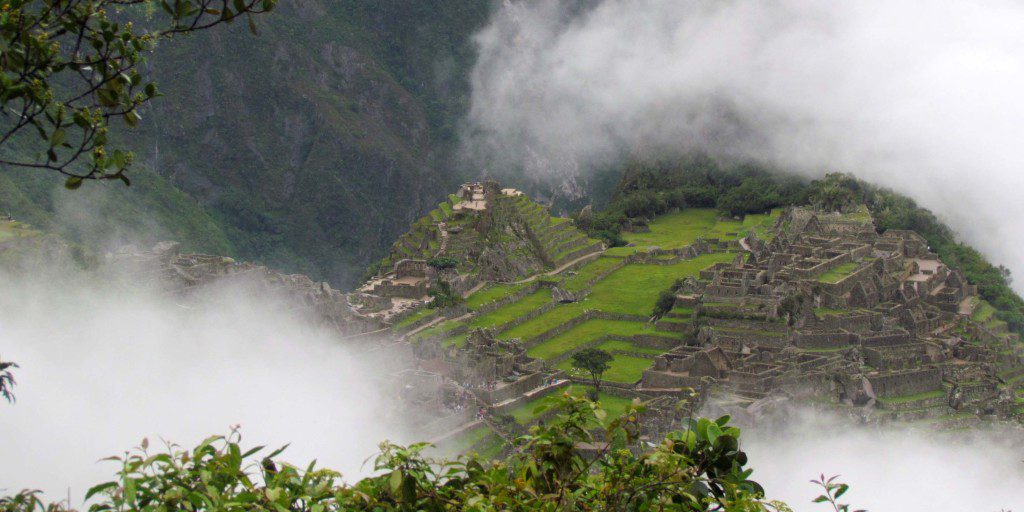
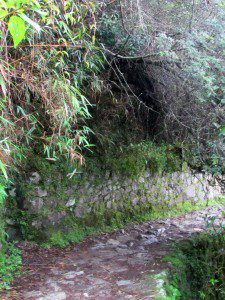
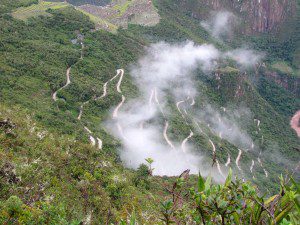
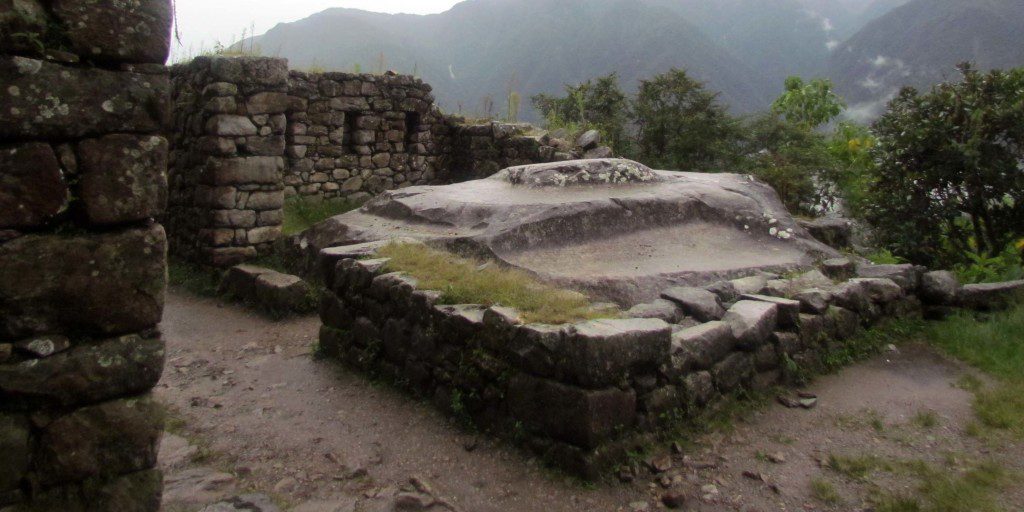
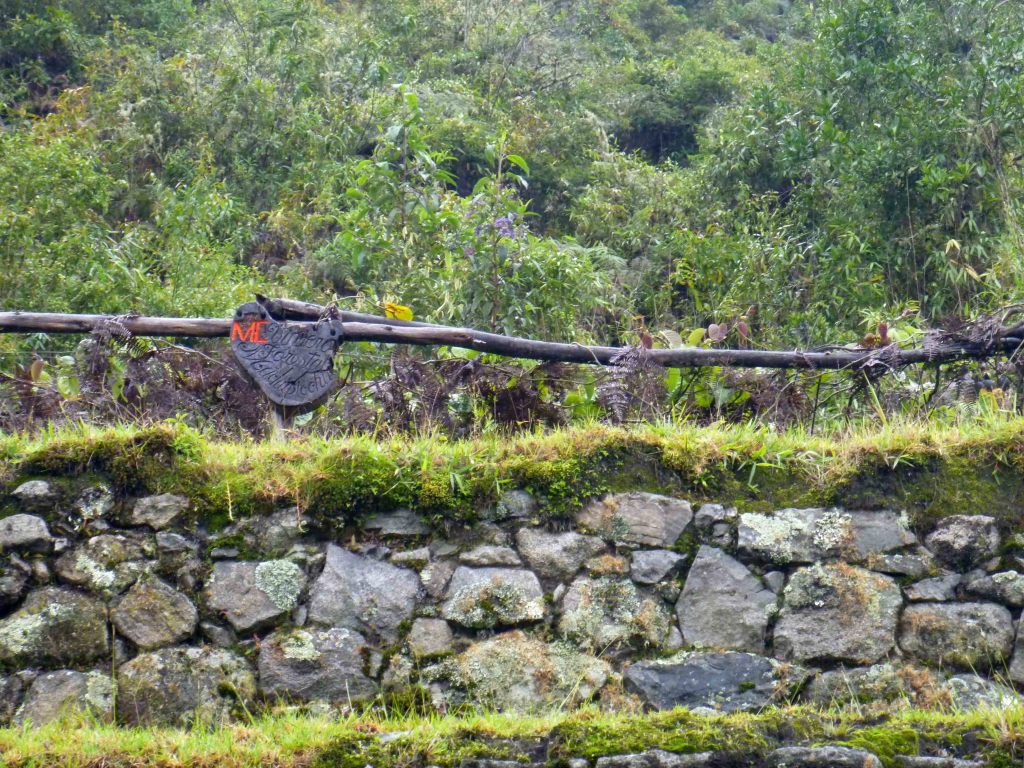
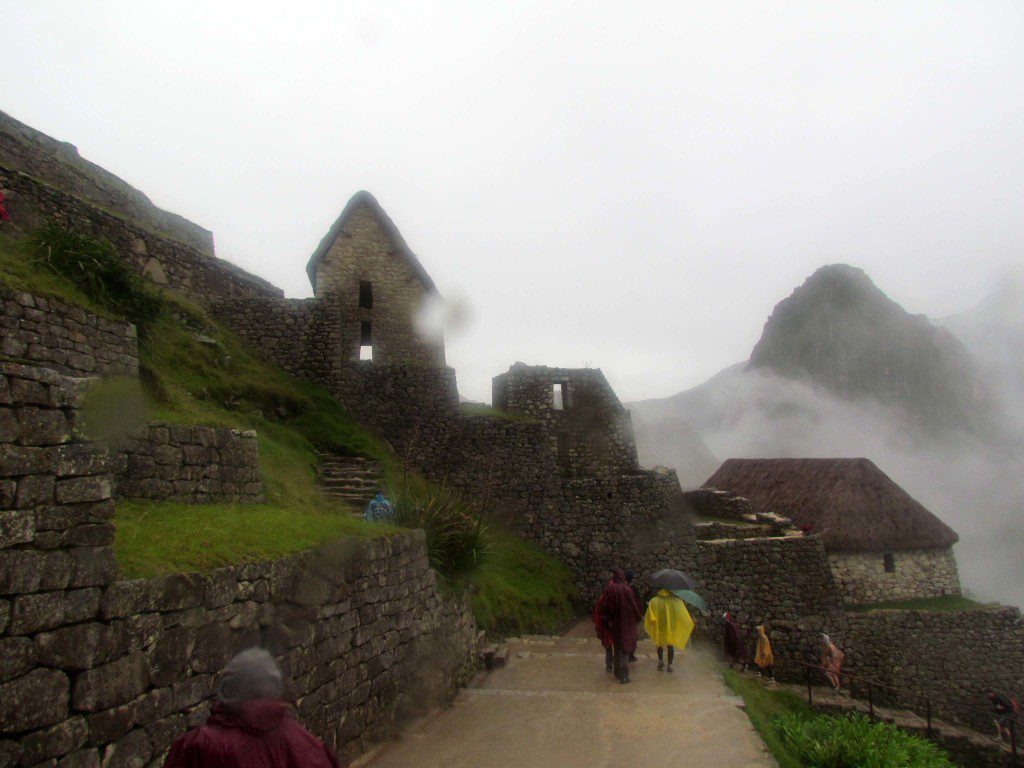









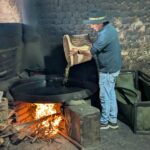


0 Comments